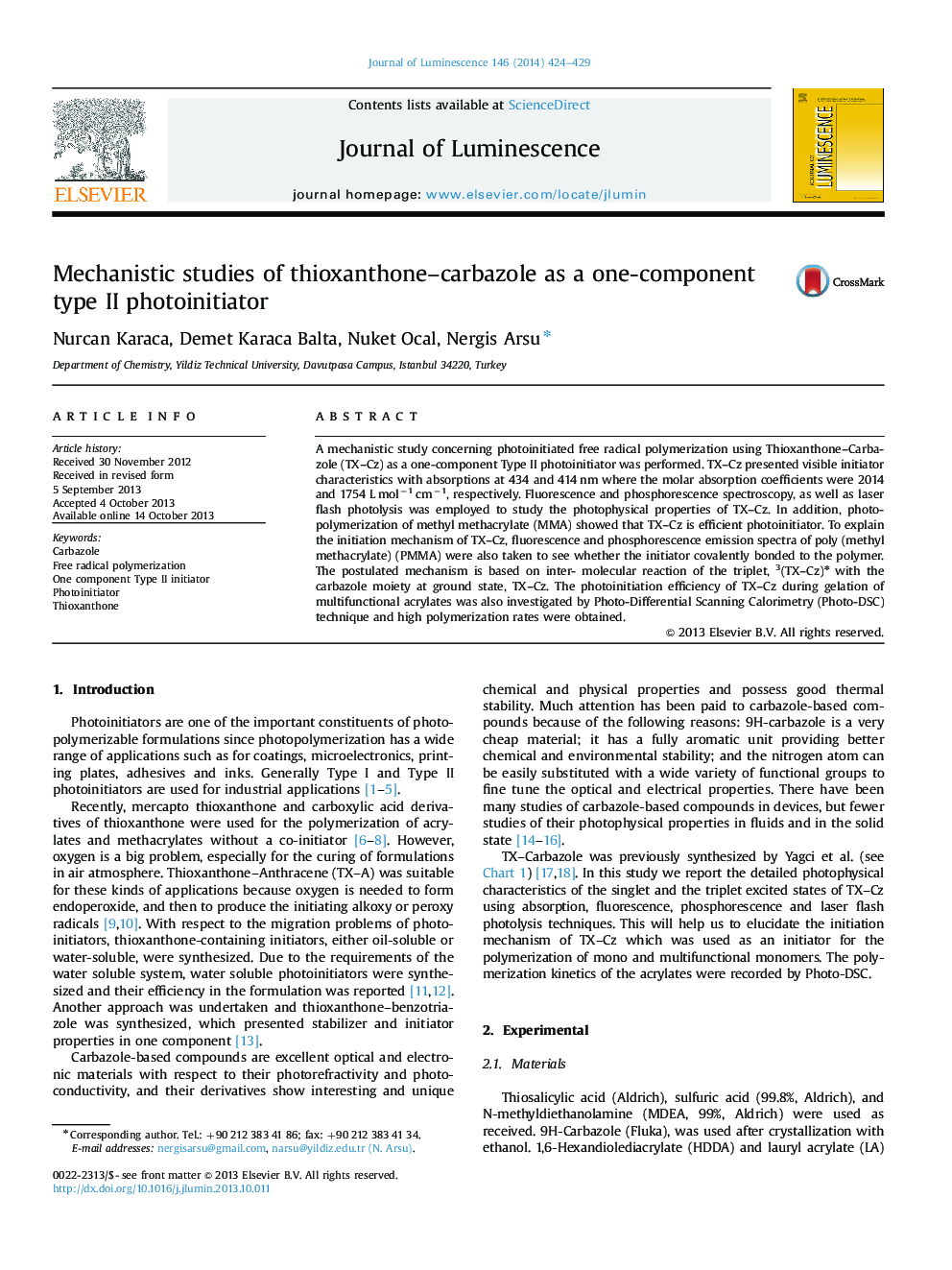| Article ID | Journal | Published Year | Pages | File Type |
|---|---|---|---|---|
| 5400363 | Journal of Luminescence | 2014 | 6 Pages |
Abstract
A mechanistic study concerning photoinitiated free radical polymerization using Thioxanthone-Carbazole (TX-Cz) as a one-component Type II photoinitiator was performed. TX-Cz presented visible initiator characteristics with absorptions at 434 and 414Â nm where the molar absorption coefficients were 2014 and 1754Â LÂ molâ1Â cmâ1, respectively. Fluorescence and phosphorescence spectroscopy, as well as laser flash photolysis was employed to study the photophysical properties of TX-Cz. In addition, photopolymerization of methyl methacrylate (MMA) showed that TX-Cz is efficient photoinitiator. To explain the initiation mechanism of TX-Cz, fluorescence and phosphorescence emission spectra of poly (methyl methacrylate) (PMMA) were also taken to see whether the initiator covalently bonded to the polymer. The postulated mechanism is based on inter- molecular reaction of the triplet, 3(TX-Cz)â with the carbazole moiety at ground state, TX-Cz. The photoinitiation efficiency of TX-Cz during gelation of multifunctional acrylates was also investigated by Photo-Differential Scanning Calorimetry (Photo-DSC) technique and high polymerization rates were obtained.
Related Topics
Physical Sciences and Engineering
Chemistry
Physical and Theoretical Chemistry
Authors
Nurcan Karaca, Demet Karaca Balta, Nuket Ocal, Nergis Arsu,
